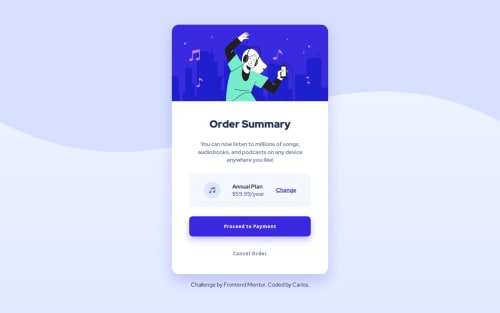Responsive layout with Flexbox and custom properties

Solution retrospective
'm proud of how closely I matched the design, maintaining semantic structure and responsive behavior with pure HTML and CSS. Next time, I would improve the use of media queries and explore subtle transitions to enhance the user experience.
(pt-BR): Estou orgulhoso de como consegui seguir fielmente o design, mantendo uma estrutura semântica e comportamento responsivo apenas com HTML e CSS. Da próxima vez, eu melhoraria o uso de media queries e exploraria transições sutis para melhorar a experiência do usuário.
What challenges did you encounter, and how did you overcome them?The main challenge was layering background images with color to match the design. I overcame this by using multiple background layers with background shorthand and testing combinations of linear-gradient and SVGs. I also had some issues with vertical alignment, which were resolved using Flexbox.
(pt-BR):
O principal desafio foi sobrepor imagens de fundo com cores para alcançar o visual desejado. Resolvi isso utilizando camadas múltiplas com a propriedade background e testando combinações de linear-gradient e SVGs. Também tive dificuldades com o alinhamento vertical, que resolvi usando Flexbox.
I’d appreciate feedback on accessibility best practices, especially for interactive elements like buttons and links. Also, I'm curious if there's a more efficient way to handle responsive background images with pure CSS.
(pt-BR): Gostaria de receber feedback sobre boas práticas de acessibilidade, especialmente para elementos interativos como botões e links. Além disso, tenho curiosidade se existe uma forma mais eficiente de lidar com imagens de fundo responsivas usando apenas CSS.
Please log in to post a comment
Log in with GitHubCommunity feedback
No feedback yet. Be the first to give feedback on Carlos Alberto da Silva's solution.
Join our Discord community
Join thousands of Frontend Mentor community members taking the challenges, sharing resources, helping each other, and chatting about all things front-end!
Join our Discord